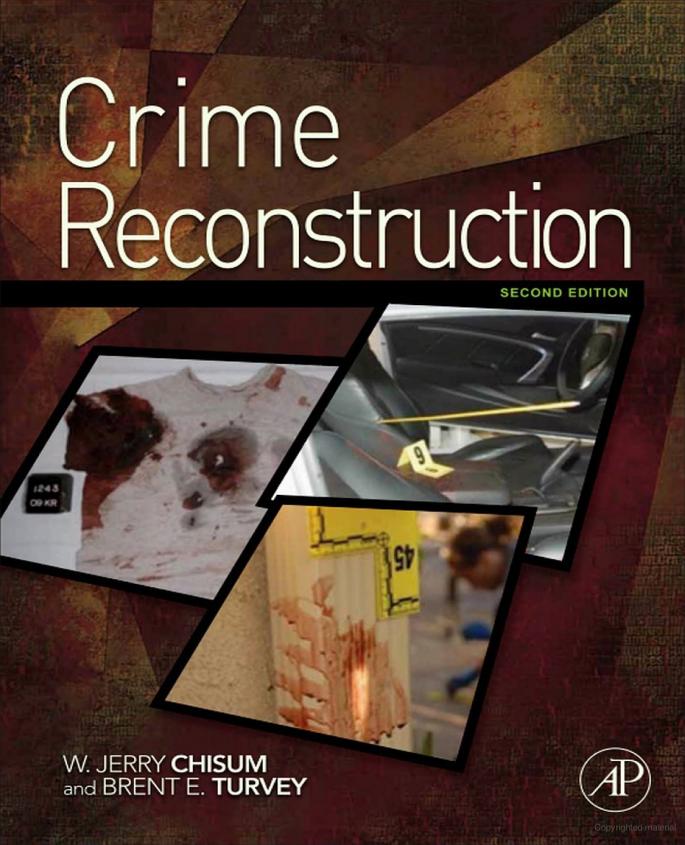the scientifically correct use of occam's razor leads to intruder, not Ramsey did it
The Unsolved Murder of JonBenet Ramsey :: The Unsolved Murder of JonBenet Ramsey-BLOGS :: Redpill's Blog
Page 1 of 1
 the scientifically correct use of occam's razor leads to intruder, not Ramsey did it
the scientifically correct use of occam's razor leads to intruder, not Ramsey did it
the scientifically correct use of occam's razor leads to intruder, not Ramsey did it
on forums you will hear of RDI claiming use of occam's razor leads to conclusion that since the Ramsey's were present, the Ramsey's did it.
let's review occam's razor
based on this discussion of Occam's razor as it is actually used in science, and the role of science in crime scene reconstruction

is there any scientific validity to the claim that since the Ramsey's were present in the home, that the simplest explanation is they must have done it, and that an intruder is less parsimonious?
to give an example of how applying occam's razor in this way is flawed,
this is forensic files

this is Heather Coffin

the RDI mis-application of occam's razor is that since Heather and her father and sisters were the only person in the home, therefore the simplest explanation is that Heather's father must have murdered Heather Coffin.
Simple.
but it leads to the wrong conclusion. Heather was like Jonbenet murdered in her bedroom by an intruder while her father and sisters slept.
Occam's razor on the scientific forensic evidence found in the heather coffin crime scene, including unsourced fibers, injuries and semen leads to the conclusion that an intruder murdered Heather coffin.
the proper scientific use of occam's razor on the Jonbenet ramsey crime scene is to look at all the scientific forensic evidence found, including unsourced fiber hair shoeprint, and expert witness evidence on forensic documentation, medical injuries, ligature, etc,
and ask what is the simplest explanation for ALL of the forensic evidence found at the crime scene, both the unsourced hi-tech shoe print AND ransom note analysis AND dna unsourced, AND multiple types of unidentified fiber hair tape ligature.
it is clear that using science, and comparing what happened to Jonbenet forensic evidence found at the crime scene with other similar crimes involving intruders such as Heather Coffin, is that Jonbenet was murdered by an intruder.
the evidence does not prove an intruder, but that an intruder provides a better explanation of what forensic evidence they actually found and how to interpret it.
the rdi posters you see ask yourself have they ever studied science, are they using acceptable scientific methodology in their approach and did they familiarize themselves with the relevant forensic.
the answer for RDI is always no.
the scientifically correct use of occam's razor involving consider how best to completely explain all of the evidence found in the Jonbenet crime scene, how it compares with other crime scenes involving intruder, and the scientific forensic conclusion leads to intruder, not Ramsey did it
on forums you will hear of RDI claiming use of occam's razor leads to conclusion that since the Ramsey's were present, the Ramsey's did it.
let's review occam's razor
Occam's razor (also Ockham's razor; Latin: lex parsimoniae "law of parsimony") is a problem-solving principle attributed to William of Ockham (c. 1287–1347), who was an English Franciscan friar, scholastic philosopher, and theologian. His principle states that among competing hypotheses, the one with the fewest assumptions should be selected.
In science, Occam's razor is used as a heuristic guide in the development of theoretical models, rather than as a rigorous arbiter between candidate models.[1][2] In the scientific method, Occam's razor is not considered an irrefutable principle of logic or a scientific result; the preference for simplicity in the scientific method is based on the falsifiability criterion. For each accepted explanation of a phenomenon, there may be an extremely large, perhaps even incomprehensible, number of possible and more complex alternatives. Since one can always burden failing explanations with ad hoc hypotheses to prevent them from being falsified, simpler theories are preferable to more complex ones because they are more testable.[3][4][5]
Applications
Science and the scientific method
In science, Occam's razor is used as a heuristic to guide scientists in developing theoretical models rather than as an arbiter between published models.[1][2] In physics, parsimony was an important heuristic in Albert Einstein's formulation of special relativity,[40][41] in the development and application of the principle of least action by Pierre Louis Maupertuis and Leonhard Euler,[42] and in the development of quantum mechanics by Max Planck, Werner Heisenberg and Louis de Broglie.[2][43]
In chemistry, Occam's razor is often an important heuristic when developing a model of a reaction mechanism.[44][45] Although it is useful as a heuristic in developing models of reaction mechanisms, it has been shown to fail as a criterion for selecting among some selected published models.[2] In this context, Einstein himself expressed caution when he formulated Einstein's Constraint: "It can scarcely be denied that the supreme goal of all theory is to make the irreducible basic elements as simple and as few as possible without having to surrender the adequate representation of a single datum of experience". An often-quoted version of this constraint (which cannot be verified as posited by Einstein himself)[46] says "Everything should be kept as simple as possible, but no simpler."
In the scientific method, parsimony is an epistemological, metaphysical or heuristic preference, not an irrefutable principle of logic or a scientific result.[3][4][47] As a logical principle, Occam's razor would demand that scientists accept the simplest possible theoretical explanation for existing data. However, science has shown repeatedly that future data often support more complex theories than do existing data. Science prefers the simplest explanation that is consistent with the data available at a given time, but the simplest explanation may be ruled out as new data become available.[1][4] That is, science is open to the possibility that future experiments might support more complex theories than demanded by current data and is more interested in designing experiments to discriminate between competing theories than favoring one theory over another based merely on philosophical principles.[3][4][5]
When scientists use the idea of parsimony, it has meaning only in a very specific context of inquiry. Several background assumptions are required for parsimony to connect with plausibility in a particular research problem. The reasonableness of parsimony in one research context may have nothing to do with its reasonableness in another. It is a mistake to think that there is a single global principle that spans diverse subject matter.[5]
It has been suggested that Occam's razor is a widely accepted example of extraevidential consideration, even though it is entirely a metaphysical assumption. There is little empirical evidence that the world is actually simple or that simple accounts are more likely to be true than complex ones.[48]
Most of the time, Occam's razor is a conservative tool, cutting out crazy, complicated constructions and assuring that hypotheses are grounded in the science of the day, thus yielding "normal" science: models of explanation and prediction.[according to whom?] There are, however, notable exceptions where Occam's razor turns a conservative scientist into a reluctant revolutionary. For example, Max Planck interpolated between the Wien and Jeans radiation laws and used Occam's razor logic to formulate the quantum hypothesis, even resisting that hypothesis as it became more obvious that it was correct.[2]
Appeals to simplicity were used to argue against the phenomena of meteorites, ball lightning, continental drift, and reverse transcriptase. One can argue for atomic building blocks for matter, because it provides a simpler explanation for the observed reversibility of both mixing and chemical reactions as simple separation and rearrangements of atomic building blocks. At the time, however, the atomic theory was considered more complex because it implied the existence of invisible particles that had not been directly detected. Ernst Mach and the logical positivists rejected John Dalton's atomic theory until the reality of atoms was more evident in Brownian motion, as shown by Albert Einstein.[49]
In the same way, postulating the aether is more complex than transmission of light through a vacuum. At the time, however, all known waves propagated through a physical medium, and it seemed simpler to postulate the existence of a medium than to theorize about wave propagation without a medium. Likewise, Newton's idea of light particles seemed simpler than Christiaan Huygens's idea of waves, so many favored it. In this case, as it turned out, neither the wave—nor the particle—explanation alone suffices, as light behaves like waves and like particles.
Three axioms presupposed by the scientific method are realism (the existence of objective reality), the existence of natural laws, and the constancy of natural law. Rather than depend on provability of these axioms, science depends on the fact that they have not been objectively falsified. Occam's razor and parsimony support, but do not prove, these axioms of science. The general principle of science is that theories (or models) of natural law must be consistent with repeatable experimental observations. This ultimate arbiter (selection criterion) rests upon the axioms mentioned above.[4]
There are examples where Occam's razor would have favored the wrong theory given the available data. Simplicity principles are useful philosophical preferences for choosing a more likely theory from among several possibilities that are all consistent with available data. A single instance of Occam's razor favoring a wrong theory falsifies the razor as a general principle.[4] Michael Lee and others[50] provide cases in which a parsimonious approach does not guarantee a correct conclusion and, if based on incorrect working hypotheses or interpretations of incomplete data, may even strongly support a false conclusion.
If multiple models of natural law make exactly the same testable predictions, they are equivalent and there is no need for parsimony to choose a preferred one. For example, Newtonian, Hamiltonian and Lagrangian classical mechanics are equivalent. Physicists have no interest in using Occam's razor to say the other two are wrong. Likewise, there is no demand for simplicity principles to arbitrate between wave and matrix formulations of quantum mechanics. Science often does not demand arbitration or selection criteria between models that make the same testable predictions.[4]
based on this discussion of Occam's razor as it is actually used in science, and the role of science in crime scene reconstruction

is there any scientific validity to the claim that since the Ramsey's were present in the home, that the simplest explanation is they must have done it, and that an intruder is less parsimonious?
to give an example of how applying occam's razor in this way is flawed,
this is forensic files

this is Heather Coffin

the RDI mis-application of occam's razor is that since Heather and her father and sisters were the only person in the home, therefore the simplest explanation is that Heather's father must have murdered Heather Coffin.
Simple.
but it leads to the wrong conclusion. Heather was like Jonbenet murdered in her bedroom by an intruder while her father and sisters slept.
Occam's razor on the scientific forensic evidence found in the heather coffin crime scene, including unsourced fibers, injuries and semen leads to the conclusion that an intruder murdered Heather coffin.
the proper scientific use of occam's razor on the Jonbenet ramsey crime scene is to look at all the scientific forensic evidence found, including unsourced fiber hair shoeprint, and expert witness evidence on forensic documentation, medical injuries, ligature, etc,
and ask what is the simplest explanation for ALL of the forensic evidence found at the crime scene, both the unsourced hi-tech shoe print AND ransom note analysis AND dna unsourced, AND multiple types of unidentified fiber hair tape ligature.
it is clear that using science, and comparing what happened to Jonbenet forensic evidence found at the crime scene with other similar crimes involving intruders such as Heather Coffin, is that Jonbenet was murdered by an intruder.
the evidence does not prove an intruder, but that an intruder provides a better explanation of what forensic evidence they actually found and how to interpret it.
the rdi posters you see ask yourself have they ever studied science, are they using acceptable scientific methodology in their approach and did they familiarize themselves with the relevant forensic.
the answer for RDI is always no.
the scientifically correct use of occam's razor involving consider how best to completely explain all of the evidence found in the Jonbenet crime scene, how it compares with other crime scenes involving intruder, and the scientific forensic conclusion leads to intruder, not Ramsey did it
_________________
If you only knew the POWER of the Daubert side

redpill- Posts : 6333
Join date : 2012-12-08
 Similar topics
Similar topics» occam's razor leads to intruder theory, not "inside job" in The Unsolved Murder of JonBenet Ramsey
» Leads in JonBenét Ramsey Murder = intruder
» genetic genealogy leads to intruder theory in The Unsolved Murder of JonBenet Ramsey
» an example of how applying science leads to intruder theory The Unsolved Murder of JonBenet Ramsey
» JonBenet Ramsey fiber microtrace evidence scientific evaluation leads to intruder theory
» Leads in JonBenét Ramsey Murder = intruder
» genetic genealogy leads to intruder theory in The Unsolved Murder of JonBenet Ramsey
» an example of how applying science leads to intruder theory The Unsolved Murder of JonBenet Ramsey
» JonBenet Ramsey fiber microtrace evidence scientific evaluation leads to intruder theory
The Unsolved Murder of JonBenet Ramsey :: The Unsolved Murder of JonBenet Ramsey-BLOGS :: Redpill's Blog
Page 1 of 1
Permissions in this forum:
You cannot reply to topics in this forum